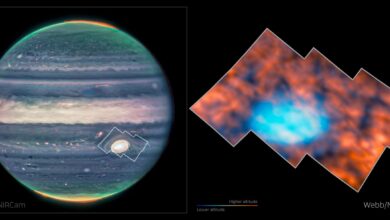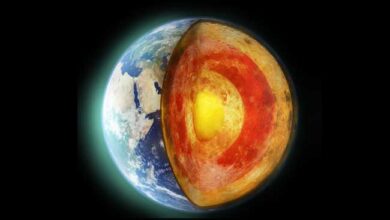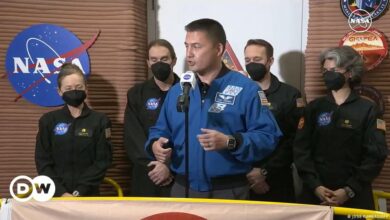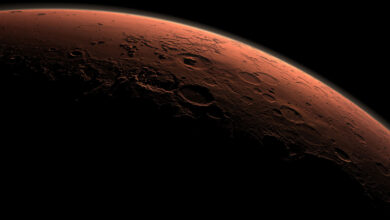Mysterious Lunar Swirls Potentially Caused by Underground Magma
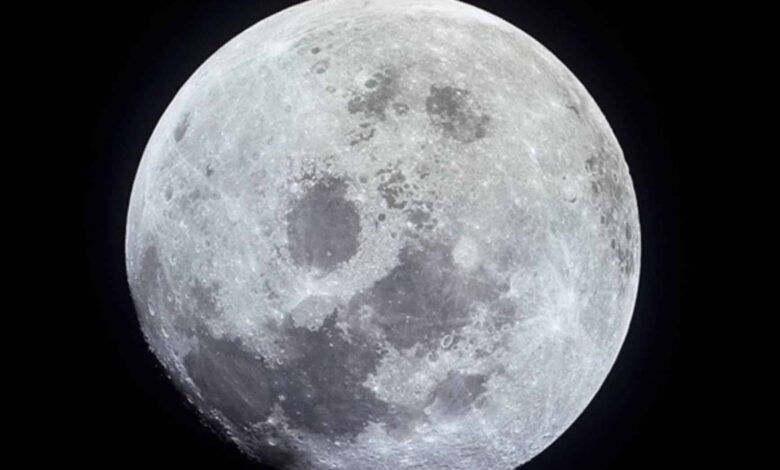
[ad_1]
Lunar swirls are mysterious light-colored, sinuous features on the moon’s surface that extend for hundreds of miles.
These intriguing patterns, visible even from a backyard telescope, have defied easy explanation for years. Recent research suggests that the swirls could be magnetized by unseen magmas beneath the lunar surface.
New insights into lunar swirls
Recent modeling and spacecraft data indicate that rocks in the lunar swirls are magnetized, which deflects or redirects solar wind particles that constantly bombard the moon. This redirection causes neighboring rocks to darken due to chemical reactions from the collisions, while the swirls themselves remain light-colored.
Michael J. Krawczynski, an associate professor at Washington University in St. Louis, explains, “Impacts could cause these types of magnetic anomalies. But there are some swirls where we’re just not sure how an impact could create that shape and that size of thing.” This observation points to a more complex process behind the swirls’ formation, suggesting that surface impacts alone cannot account for their unique shapes and sizes.

Krawczynski and his team propose that underground lavas cooling slowly in a magnetic field might be responsible for the magnetic anomalies observed in the swirls. Their experiments, published in the Journal of Geophysical Research: Planets, focused on the mineral ilmenite, which is abundant on the moon.
They found that under lunar conditions, ilmenite can react to form magnetizable iron metal particles, potentially explaining the swirls’ magnetization. Yuanyuan Liang, a co-author of the study, noted, “The smaller grains that we were working with seemed to create stronger magnetic fields because the surface area to volume ratio is larger for the smaller grains compared to the larger grains. With more exposed surface area, it is easier for the smaller grains to undergo the reduction reaction.” This finding suggests that the size and distribution of mineral grains play a critical role in the magnetization process.

Implications for lunar exploration
Determining the origin of lunar swirls is crucial for understanding the processes that have shaped the lunar surface and the history of the moon’s magnetic field. Future missions, such as NASA’s planned rover mission to the Reiner Gamma swirl in 2025, will help gather more data to confirm these findings. “If you’re going to make magnetic anomalies by the methods that we describe, then the underground magma needs to have high titanium,” Krawczynski stated. “We have seen hints of this reaction creating iron metal in lunar meteorites and in lunar samples from Apollo.
But all of those samples are surface lava flows, and our study shows cooling underground should significantly enhance these metal-forming reactions.” This insight could reshape our understanding of lunar geology and the role of magnetic fields in shaping planetary surfaces.
This research will aid in interpreting data from future lunar missions, particularly those exploring magnetic anomalies. For now, Krawczynski emphasizes the need for more direct sampling: “If we could just drill down, we could see if this reaction was happening. That would be great, but it’s not possible yet. Right now, we’re stuck with the surface.” As technology advances, future missions might eventually provide the capability to drill beneath the moon’s surface, offering a more comprehensive understanding of these enigmatic features.
The findings from these studies will be instrumental as NASA and other space agencies prepare for upcoming lunar missions, aiming to uncover the mysteries of lunar swirls and their implications for the moon’s geological history. By understanding the magnetization process and the role of underground magma, scientists hope to unlock new insights into the moon’s past and its evolution. This research not only sheds light on lunar phenomena but also enhances our broader understanding of planetary magnetism and geological processes in our solar system.
[ad_2]
Source link


